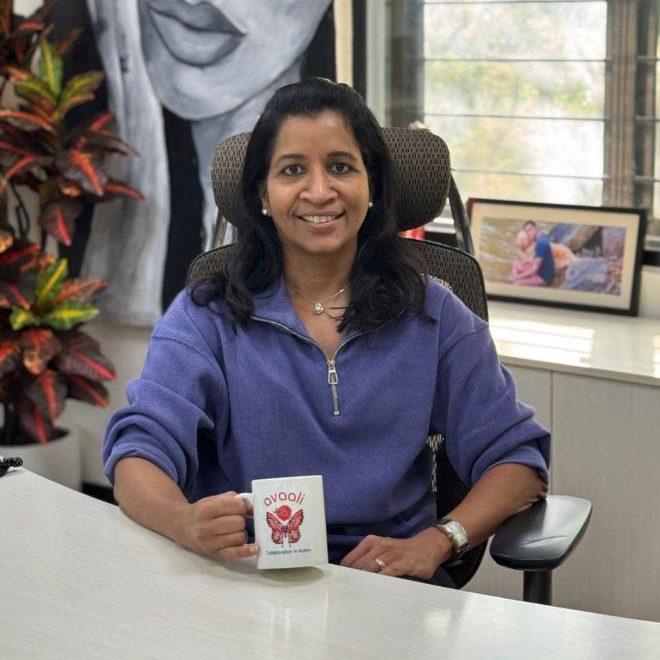Technology
“Automation isn’t an Outcome – It’s a Capability”: Srividya Kannan, Founder-CEO of Avaali Solutions
Published
5 months agoon

For leading enterprises, digital transformation is about more than adopting technology. It’s a continuous journey of building capabilities, harmonizing processes across regions, and cultivating a culture ready for ongoing change.

As Srividya Kannan, Founder and CEO of Avaali Solutions tells us, real value comes not from isolated automation, but from creating an evolving ecosystem underpinned by strong governance, cross-functional talent, and persistent stakeholder alignment. The biggest roadblocks remain fragmented workflows, legacy systems, and internal resistance, but tackling these with structured engagement and a future-ready mindset empowers organizations to achieve lasting, scalable impacts in efficiency, cost savings, and competitive readiness.
Read the full conversation below.
What are some of the biggest digital transformation challenges you’ve helped enterprises overcome?
One of the most common challenges we’ve encountered is the lack of process standardization across business units and geographies, which makes it difficult to scale automation effectively. In many large enterprises—especially in regulated sectors like oil and gas, banking, and infrastructure—fragmented workflows, legacy systems, and internal resistance to change have been major barriers to transformation.
At Avaali Solutions, we specialize in building captive Shared Service Centers and enabling Source-to-Pay automation to help enterprises overcome these very challenges. Our approach is to work closely with internal teams to first harmonize processes, establish a robust governance framework, and then implement digital solutions that align with the enterprise’s operational realities.
We’ve successfully executed over 300 transformation projects across Asia, the Middle East, and Europe—consistently delivering 50–70% reductions in process cycle times and 20–40% cost savings. Through our flagship solution, Velocious—a comprehensive sourcing and supplier experience platform—and technologies such as AI-based templateless ICR/OCR, ECM, workflow automation, and financial process automation, we’ve enabled enterprises to drive efficiency, visibility, and compliance.
Another critical challenge is change management—ensuring widespread adoption and alignment across the organization. We address this through a structured stakeholder engagement model, consistent communication, and a focus on delivering tangible business value from day one.
Our work with clients such as Oil India Ltd., Tata Projects, and Bidco Africa is a testament to how technology, when applied strategically, can help build resilient, future-ready shared services ecosystems.
How do you see automation, AI, and Hyperautomation shaping the future of procure-to-pay processes?
Automation and AI are transforming procure-to-pay from a transactional function into a strategic enabler. With AI, we’re seeing more proactive risk identification, smarter compliance checks, and dynamic supplier evaluation based on real-time and unstructured data. Hyperautomation takes this further by integrating multiple technologies, like RPA, AI, workflow orchestration into a seamless ecosystem. The result is faster approvals, better visibility, improved working capital, and enhanced governance. In the near future, I believe AI will assist not just in “doing” but also in “thinking” that would help procurement leaders simulate scenarios, recommend sourcing strategies, and pre-empt supply chain disruptions.
How has your cross-functional leadership experience influenced your journey as a founder?
It’s been foundational. Having worked across finance, operations, and technology functions earlier in my career, I’ve seen transformation from multiple vantage points. That perspective helped me understand the language and priorities of different stakeholders, from CFOs and CIOs to procurement leaders. It shaped how Avaali approaches client engagements, that is not just through a technology lens, but through the lens of value delivery, risk control, and operational alignment. It also taught me the importance of empathy, because transformation isn’t just about systems; it’s about people and behaviors.
What common misconceptions do enterprises have about digital automation, and how do you address them?
Automation isn’t an outcome – it’s a capability. Many organizations celebrate the milestone of successfully deploying their first set of automated processes, marking a significant step toward increased efficiency and innovation. It’s seen as a major milestone – a final victory lap. But here’s the hard truth: automation isn’t a finish line. It’s a foundation.
Automation isn’t about solving one set of problems or streamlining a set of processes. It’s about building a capability. A dynamic, evolving muscle that empowers organizations to adapt, scale, and transform over time. The companies that rise above their competition don’t just implement technology; they master the art of embedding automation into the very DNA of their operations.
I’ve seen enterprises automate a series of isolated processes only to stall when faced with enterprise-wide transformation.
Why? Because they treated automation as an endpoint rather than an ecosystem.
𝗧𝗵𝗲 𝘁𝗿𝘂𝗲 𝗺𝗲𝗮𝘀𝘂𝗿𝗲 𝗼𝗳 𝘀𝘂𝗰𝗰𝗲𝘀𝘀 𝗶𝘀 𝗻𝗼𝘁 𝗵𝗼𝘄 𝗺𝘂𝗰𝗵 𝘆𝗼𝘂 𝗮𝘂𝘁𝗼𝗺𝗮𝘁𝗲, 𝗯𝘂𝘁 𝗵𝗼𝘄 𝗽𝗿𝗲𝗽𝗮𝗿𝗲𝗱 𝘆𝗼𝘂 𝗮𝗿𝗲 𝘁𝗼 𝗸𝗲𝗲𝗽 𝗮𝘂𝘁𝗼𝗺𝗮𝘁𝗶𝗻𝗴.
Building an enduring automation capability requires more than tools. It demands:
– 𝗚𝗼𝘃𝗲𝗿𝗻𝗮𝗻𝗰𝗲 𝘀𝘁𝗿𝘂𝗰𝘁𝘂𝗿𝗲𝘀 to ensure scalability and compliance.
– 𝗔 𝘁𝗮𝗹𝗲𝗻𝘁 𝗽𝗶𝗽𝗲𝗹𝗶𝗻𝗲 that combines skilled analysts with forward-thinking technologists.
– 𝗔 𝗰𝘂𝗹𝘁𝘂𝗿𝗮𝗹 𝗽𝗮𝗿𝗮𝗱𝗶𝗴𝗺 that embraces continuous improvement and exploration of new opportunities.
Think of automation as a flywheel. The more you build, the more momentum and value you generate. And as new technologies emerge or conditions shift, an adaptable automation strategy ensures you not only respond to change—you lead it.
Thomas Edison once said, “There’s a way to do it better—find it.” This mindset is the essence of strong automation capability. It’s not about what you accomplish once; it’s about your ability to innovate and improve consistently.
Stop chasing automation as a result. Start investing in it as a capability that compounds over time. The companies that do this aren’t just preparing for the future, they’re building it.
5. What is your perspective on the growing adoption of GBS and GBS-STCC models in India, and how is Avaali contributing to their evolution and success?
The growing momentum around GBS (Global Business Services) and GBS-STCC (Shared Technology and Capability Centers) models in India reflects a clear enterprise intent to centralize operations, drive efficiency, and gain scale.
Today, nearly one-third of commercial real estate in India is reportedly being consumed by GBS/GBS-STCC operations. While this signals a strong commitment to operational consolidation, it also raises important questions around long-term sustainability, especially considering India’s infrastructure constraints—whether it’s utilities like water and power, or even physical space.
At Avaali, we believe that the future of GBS cannot rely solely on scaling people and real estate. Instead, it needs to be built on technology-driven resilience. That’s why we launched the Enterprise Resilience Hub (ERH), a strategic initiative designed to enable autonomous GBS operations. The ERH challenges the traditional, human-centric shared services model by focusing on AI and automation to drastically reduce human dependency.
Our goal with the ERH is to enable autonomous, end-to-end processes, such as invoice-to-posting or invoice-to-cash, with minimal manual intervention, reducing manpower requirements by up to 90–95%. It’s not just about automation; it’s about creating a digital-first, scalable ecosystem that aligns with India’s broader AI ambitions. In essence, Avaali’s contribution lies in helping enterprises reimagine GBS not as a physical operation center, but as a resilient, intelligent, and adaptive service model, a one that is truly future-ready.
You may like
-


Justdial releases ‘How India Searched in 2025’ report, Decoding India’s evolving consumer behaviour
-


From Intention to Action: Health Priorities in a High-AQI, High-Pressure Environment
-


The Future of Air: How 2026 Could Transform India’s Urban Breathability
-


Building a BRIDGE: The NTT Global Data Centers way
-


3 movies that make for the perfect cinematic countdown to NYE
-


Indian economy officially becomes fourth-largest in the world, but are we really rich?


